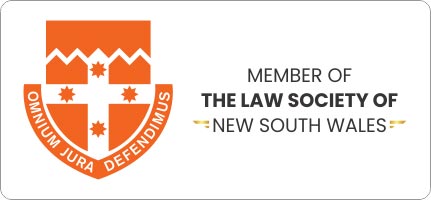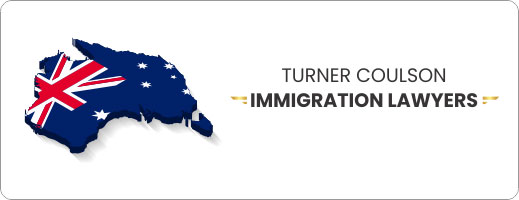Subclass 457 & ENS Training benchmarks:
New Legislative Instruments
Three legislative instruments related to training benchmarks have been released today.
Subclass 457 Training benchmarks – Legislative Instrument – F2017L00796 – IMMI 17/045 :
Specification of Training Benchmarks and Training Requirements Instrument 2017
Subclass 186 ENS Direct Entry – Legislative Instrument – F2017L00789 -IMMI 17/074: Specification of Training Requirements Instrument 2017
Both instruments update and further define the criteria for Training Benchmarks A & B recent expenditure, time frames, acceptable training expenditure and the definition of payroll, as follows:
Recent expenditure
For Training Benchmark A (TBA) this is at least 2% of payroll expended in the previous financial yearOR in the previous twelve months, as evidenced by receipts for payment or a letter from the relevant fund.
For Training Benchmark B (TBB) this is at least 1% of payroll expended in the previous financial yearOR previous twelve months and evidenced by a receipt for the payment(s) or an employment contract for the relevant individual whose salary payments are counted towards the benchmark.
Acceptable expenditure for TBA
Only expenditure made to the following funds are acceptable for TBA purposes:
- an industry training fund
- a fund managed by a recognised industry body
- a recognised scholarship fund operated by an Australian university or TAFE college
Expenditure that willnot be accepted for TBA:
- training funds operated by RTOs or private individuals
- funds that allocate a percentage or part of the contributions as commissions or offer refunds for failed immigration applications
Applicable expenditure for TBB
The expenditure that may count towards this benchmark has been amended and more clearly defined. Changes include:
- the addition of reasonable travelling costs to training venues
- face to face training delivered by RTOs must contribute to an Australian Qualifications Framework qualification
- only the salary of persons whosesole roleis to provide training to Australian employees may be claimed
Expenditure that willnot be accepted:
- training not relevant to the industry the business operates within
- training undertaken by principals of the family and their family members
- induction training
- staff salaries for undertaking training courses
- purchase of general software
- membership fees, books journals and magazine subscriptions
- attending conferences unless for cpd purposes
Definition of Payroll
The definition of payroll has been clarified and is specified as the the total amount of the payments made toemployees and to contractors and subcontractors, whether or not such payments are included for payroll tax purposes or not.
The methods for calculating training expenditure requirements where there is no payroll have not changed.
Both Instruments commence on1 July 2017.
Legislative Instrument 2017 – F2017L00795 – IMMI 17/075: Repeal of Training Benchmarks and Training Requirements) Instrument 2017. This Instrument repeals the whole of IMMI 13/030 on 1 July 2017 and the instruments above will come into effect.
2017 – 2018 MLTSSL to be updated 1 July 2017
As previously indicated by the Department’s fact sheets in April 2017, the 2017/18 Medium and Long Term Skilled Shortage List (MLTSSL) will be released on1 July 2017.
This list is revised by the Department of Education and Training (DET) each year.
A number of occupations are flagged in the current 2016/17 MLTSSL for possible removal in the future. Members should be aware that these occupations may be totally removed or the occupation ceilings within SkillSelect be reduced on 1 July 2017.
The DET 2016/17flagged occupation list is availablehere
The DET methodology used to revise the lists annually is availablehere
Protection,Humanitarian and Refugee Visa – application arrangements
Legislative Instrument – F2017L00767 – IMMI 17/051: Arrangements for Protection, Humanitarian and Refugee Visas) Instrument 2017 specifies the forms, places and manner for making applications for Subclasses 866, 785 and 790 visas.
Item 1401 – Protection – Subclass 866
Applicants may use the new Form 866 (Internet) or paper Form 866. Where a paper application is made it must be posted to:
Onshore Protection
Department of Immigration and Border Protection
GPO Box 9984
SYDNEY NSW 2001
or
Onshore Protection
Department of Immigration and Border Protection
GPO Box 241
MELBOURNE VIC 300
Item 1403 – Temporary Protection – Subclass 785
Applicants who do not hold or have never held a Temporary Protection or Safe Haven Enterprise visa may use the new Form 866 (Internet) or paper Form 866.
Applicants who hold or have held these visas use Form 1505 (Internet) or paper Form 1505.
Paper applications for this subclassmust be posted to:
IMA Protection Support
Department of Immigration and Border Protection
GPO Box 9984
Sydney 2001
Item 1404 – Safe Haven Enterprise visa – Subclass 790
Applicants who do not hold or have never held a Temporary Protection or Safe Haven Enterprise visa may use the new Form 866 (Internet) or paper Form 866with design date including and subsequent to 07/17 or paper Form 790.
Applicants who hold or have held these visas should no longer use Form 790 as this is replaced by Form 1505 (Internet) or paper Form 1505.
Paper applications for this subclassmust be posted to:
IMA Protection Support
Department of Immigration and Border Protection
GPO Box 9984
Sydney 2001
This Instrument revokes IMMI 2016/024 and commences on1 July 2017.
Bridging Visa update – Addition of Form 886 (Internet)
Legislative Instrument – F2017L00768 – IMMI 17/061: Arrangements for Applications for Bridging Visas) Instrument 2017, adds the online application Form 866 (Internet) to the list of forms that may be used to apply for associated Bridging visas A,C and E.
This corresponds to the addition of Protection, Humanitarian and Refugee visas to the DIBP online application system.
This Instrument commences on1 July 2017.
Chile and Argentina – Work and Holiday Visa number increases
The number of work and holiday visa places for young Australian, Chilean and Argentinean nationals will be increased annually from1 July 2017.
There will be an increase from 1500 to 2000 reciprocal visa places for Australian and Chilean nationals.
There will be an increase from 700 places to 1500 visa places annually for Australian and Argentineans.
Migration Amendment Bill – Capstone Exam clarification
The Migration Amendment (Regulation of Migration Agents) Bill [C2017B00136] was presented to the House of Representatives on 21 June 2017.
To clarify the proposed requirements for the Capstone Exam:
Schedule 2
The Graduate Diploma of Migration Law and Practice will replace the Graduate Certificate as the prescribed course for registration as a migration agent (s289A(c)).
Applicants will also be required to demonstrate the currency of their knowledge and skills by undertaking a prescribed examination to be known as theCapstone Exam within the three yearsbefore applying for registration, not within three years of completing the Graduate Diploma as previously advised.
If enacted the Migration Amendment (Regulation of Migration Agents) Bill is proposed to commence on 1 July 2018.






